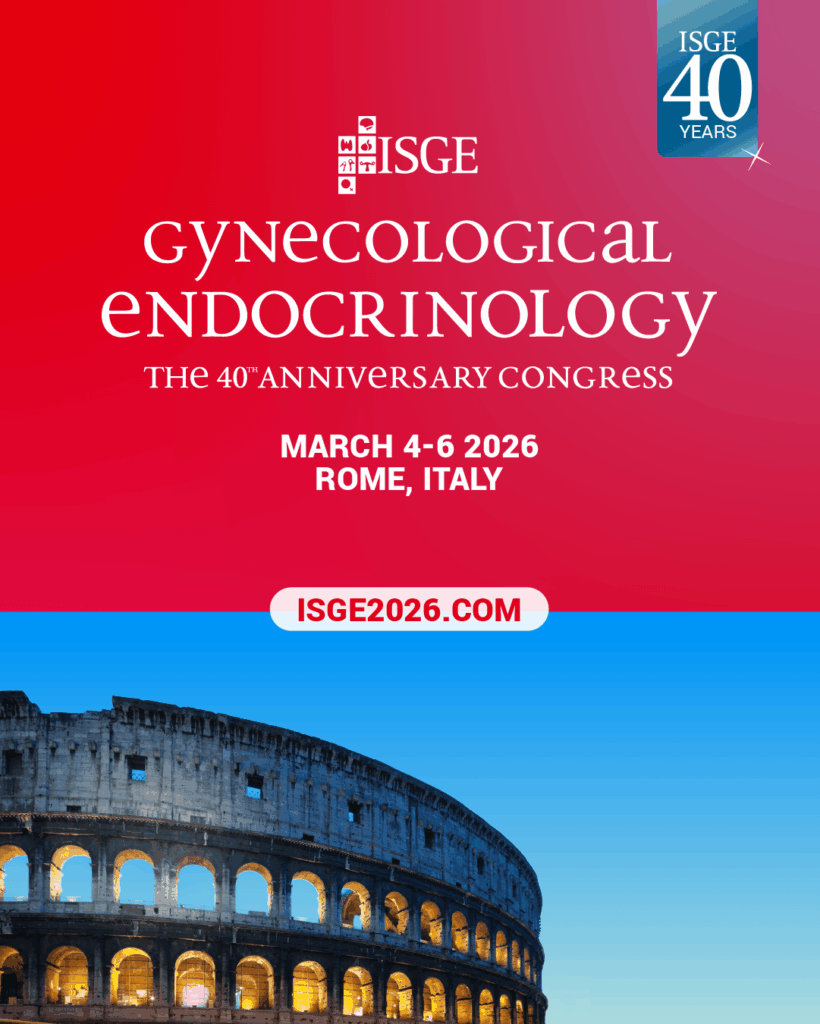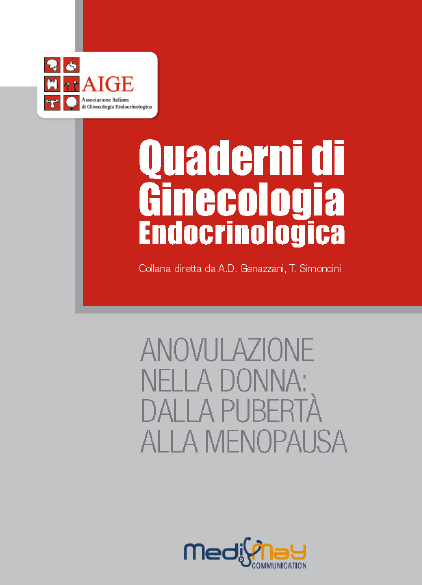-
Elisabeth Lerchbaum, Verena Schwetz, Albrecht Giuliani, Barbara Obermayer-Pietsch
Influence of a positive family history of both type 2 diabetes and PCOS on metabolic and endocrine parameters in a large cohort of PCOS women
Eur J Endocrinol 170 (5) 727-739, 2014Abstract
Objective There is evidence suggesting a strong genetic background of polycystic ovary syndrome (PCOS). We aim to study the metabolic and endocrine characteristics of PCOS women with and without a family history (FHx) of type 2 diabetes mellitus (T2DM) and PCOS.
Design Cross-sectional study.Methods We analysed the association of T2DM FHx and PCOS FHx with metabolic and endocrine parameters in 714 PCOS women.
Results A positive FHx of T2DM and PCOS were prevalent in 36.8 and 21.4% of PCOS women respectively. We found an independent association of T2DM FHx with central fat accumulation, obesity, prediabetes, metabolic syndrome (MS), insulin resistance, low HDL and elevated blood pressure (P<0.05 for all). PCOS FHx was independently associated with prediabetes (P<0.05). We observed an independent association of PCOS FHx with clinical and biochemical hyperandrogenism (P<0.05 for all), whereas there was no independent association of T2DM FHx with hyperandrogenism. PCOS women with a positive FHx of both T2DM and PCOS had an adverse metabolic and endocrine profile including a linear increase in risk of obesity, central fat accumulation, MS, prediabetes and low HDL (P<0.05 for all). Conclusions Our findings suggest that the assessment of FHx might allow risk stratification of PCOS women, which is important considering the high prevalence of PCOS.
-
David E. Reichman, Dan Goldschlag, Zev Rosenwaks
Value of antimullerian hormone as a prognostic indicator of in vitro fertilization outcome
Fertil Steril 2014;101:1012–8Abstract
Objective: To determine the predictive attributes of antimullerian hormone (AMH) in terms of oocyte yield, cycle cancellation, and pregnancy outcomes.
Design: Retrospective cohort.
Setting: Academic center.
Patient(s): All patients initiating IVF at the Weill-Cornell Ronald O. Perelman and Claudia Cohen Center for Reproductive Medicine from April 2010 through January 2013.
Intervention(s): In vitro fertilization without preimplantation genetic testing.
Main Outcome Measure(s): Number of oocytes retrieved, cycle cancellation, clinical and ongoing pregnancy, implantation, and miscarriage rates.
Result(s): Antimullerian hormone was positively correlated with number of eggs retrieved. Number of oocytes retrieved increased with increasing AMH within each age group and diminished slightly within AMH groupings as age increased. Overall, AMH was significantly correlated with risk of cycle cancellation, with an area under the curve (AUC) of 0.74. Patients with undetectable AMH had a 13.3-fold increased risk of cancellation as compared with patients with an AMH >2.0 ng/mL. Antimullerian hormone had an AUC of 0.83 for prediction of three or fewer oocytes; undetectable AMH exhibited sensitivity and specificity of 21.1% and 98.2%, respectively, for three or fewer oocytes retrieved. Antimullerian hormone was less predictive of pregnancy, with AUCs ranging from 0.55 to 0.65. Even with undetectable AMH, 23.5% of patients <40 years old achieved live birth after transfer.
Conclusion(s): Antimullerian hormone is a fairly robust metric for the prediction of cancellation and how many oocytes may be retrieved after stimulation but is a relatively poor test for prediction of pregnancy after any given treatment cycle. Patients with extremely low levels of AMH still can achieve reasonable treatment outcomes and should not be precluded from attempting IVF solely on the basis of an AMH value.
-
Cem Celik, Nicel Tasdemir, Remzi Abali, Ercan Bastu, Murat Yilmaz
Progression to impaired glucose tolerance or type 2 diabetes mellitus in polycystic ovary syndrome: a controlled follow-up study
Fertil Steril 2014;101:1123–8Abstract
Objective: To investigate whether retesting with the oral glucose tolerance test (OGTT) is useful and necessary for all women with polycystic ovary syndrome (PCOS).
Design: Follow-up study.
Setting: Tertiary medical center.
Patient(s): Eighty-four women with PCOS and 45 healthy controls.
Intervention(s): Peripheral venous blood sampling.
Main Outcome Measure(s): We performed a 75-g 2-hour OGTT in women with normal glucose tolerance (NGT) and impaired glucose tolerance (IGT) at the time of the first test with and without PCOS.
Result(s): The average follow-up period for women with PCOS was 2.6 years (range, 2–4.17 years). Seventy-eight of these women had NGT at baseline, 11.5% converted to IGT, with an annualized incidence rate of 4.5%. Of those women with IGT at baseline (n¼6), 33.3% converted to type 2 diabetes mellitus, with an annualized incidence rate of 10.4%. In the healthy subjects, the average follow-up period was 2.6 years (range, 2–4.08 years). Forty-two of these women had NGT at baseline, 2.3% converted to IGT, giving a progression of 0.9% per year. Among the three women with IGT at baseline, 33.3% reverted to NGT, and 66.6% had persistent IGT.Conclusion(s): Conversion rates from NGT to IGT or type 2 diabetes mellitus were accelerated in women with PCOS compared with healthy subjects. Women with PCOS should be tested regularly for early detection of abnormal glucose tolerance. In addition, the interval for periodic rescreening should be determined by further studies involving more women with PCOS
-
Stefano Palomba, Caterina Materazzo, Angela Falbo, Francesco Orio, Giovanni Battista La Sala, Charles Sultan
Metformin, oral contraceptives or both to manage oligo-amenorrhea in adolescents with polycystic ovary syndrome? A clinical review
Gynecol Endocrinol, 2014; 30(5): 335–340Abstract
The management of oligo-amenorrhea in adolescent patients with polycystic ovary syndrome (PCOS) represents an important and difficult challenge. Metformin and/or oral contraceptives (OCs) are different strategies widely proposed in these patients. The objective of the current review was to provide an overview on the use of metformin and/or OCs for the management of oligo-amenorrhea in adolescents with PCOS underlining their potential risks and benefits in order to help the clinician to choose the best patients’ tailored treatment.
-
Fatma Kutlusoy, Ismail Guler, Mehmet Erdem, Ahmet Erdem, Nuray Bozkurt, Ebru H. Biberoglu, Kutay O. Biberoglu
Luteal phase support with estrogen in addition to progesterone increases pregnancy rates in in vitro fertilization cycles with poor response to gonadotropins
Gynecol Endocrinol, 2014; 30(5): 363–366Abstract
In this study, our objective was to determine the effect of adding estradiol hemihydrate (E2) to progestin (P) for luteal phase support on pregnancy outcome in in vitro fertilization (IVF) cycles with poor response to gonadotropins. Ninety-five women with poor ovarian response who underwent controlled ovarian hyperstimulation (COH) with gonadotropin releasing hormone (GnRH) agonist or GnRH antagonist plus gonadotropin protocol for IVF were prospectively randomized into three groups of luteal phase support after oocyte retrieval. Group 1 (n = 33) received only intravaginal progesterone gel (Crinone 8% gel). Group 2 (n = 27) and Group 3 (n = 35) received intravaginal progesterone plus oral 2 and 6 mg estradiol hemihydrate, respectively. Main outcome measures were overall and clinical pregnancy rates (PRs) per patient. Serum LH, E2 and P levels at 7th and 14th days of luteal phase were also measured. Overall and clinical PRs were significantly higher in 2mg E2+P than P-only group (44% versus 18% and 37% versus 12.1%, respectively). There were no statistically significant differences between 6mg E2+P versus P-only and 2mg E2+P versus 6mg E2+P groups regarding PRs. Addition of 2mg/day E2 in addition to P for luteal support significantly increase overall and clinical PRs in cycles with poor response to gonadotropins after IVF.
-
Marco Medici, Nese Direk, W. Edward Visser, Tim I. M. Korevaar, Albert Hofman, Theo J. Visser, Henning Tiemeier, and Robin P. Peeters
Thyroid Function Within the Normal Range and the Risk of Depression: A Population-Based Cohort Study
J Clin Endocrinol Metab 99: 1213–1219, 2014Abstract
Context: Overt hypo- and hyperthyroidism are associated with an increased risk of depression. Little is known about the effects of variation in thyroid function within the normal range on the risk of depression.
Objective: The objective of the study was to examine the association between normal-range thyroid function and the risk of depression.
Design, Setting, and Participants: This was a cohort study in 1503 Dutch men and women, aged 70.6 (7.3) (mean [SD]) years. At baseline, serum TSH, thyroperoxidase antibody levels, and depressive symptoms [Center for Epidemiologic Studies Depression Scale (CES-D)] were assessed. A CES-D of 16 or greater is indicative of a depressive disorder. During follow-up (mean 8.0 y), participants were continuously monitored for the occurrence of incident depressive syndromes (n = 156).
Results: Cross-sectionally, persons in the lowest TSH tertile (0.3–1.0 mU/L) had more depressive symptoms [CES-D score (mean): 7.95 vs 6.63, P<.014] as well as an increased risk of a CES-D of 16 or greater [10.7% vs 5.0%, odds ratio (95% confidence interval) 2.22 (1.18–4.17)], compared with persons in the highest normal range TSH tertile (1.6–4.0 mU/L). In the prospective analyses, persons in the lowest TSH tertilewhowere depression free at baseline had a higher risk of incident depressive syndromes [12.3% vs 7.6%, odds ratio (95% confidence interval) 1.85 (1.10–3.11)]. Thyroid autoimmunity (thyroperoxidase antibody positivity) was not associated with CES-D scores or incident depressive syndromes. Conclusions: Elderly persons with low-normal TSH levels have more concurrent depressive symptoms as well as a substantially increased risk of developing a depressive syndrome in the subsequent years. This study identifies low-normal TSH as an important risk factor for depression in the elderly.S. Maheux-Lacroix, A. Boutin, L. Moore, M.-E. Bergeron, E. Bujold, P. Laberge, M. Lemyre, S. Dodin
Hysterosalpingosonography for diagnosing tubal occlusion in subfertile women: a systematic review with meta-analysis
Hum. Reprod. (2014) 29 (5): 953-963Abstract
STUDY QUESTION Is hysterosalpingosonography (sono-HSG) an accurate test for diagnosing tubal occlusion in subfertile women and how does it perform compared with hysterosalpingography (HSG)?
SUMMARY ANSWER sono-HSG is an accurate test for diagnosing tubal occlusion and performs similarly to HSG.
WHAT IS KNOWN ALREADY sono-HSG and HSG are both short, well-tolerated outpatient procedures. However, sono-HSG has the advantage over HSG of obviating ionizing radiation and the risk of iodine allergy, being associated with a greater sensitivity and specificity in detecting anomalies of the uterine cavity and permitting concomitant visualization of the ovaries and myometrium.
STUDY DESIGN, SIZE, DURATION A systematic review and meta-analysis of studies published in any language before 14 November 2012 were performed. All studies assessing the accuracy of sono-HSG for diagnosing tubal occlusion in a subfertile female population were considered.
PARTICIPANTS/MATERIALS, SETTING, METHODS We searched Medline, Embase, Cochrane Library, Web of Science and Biosis as well as related articles, citations and reference lists. Diagnostic studies were eligible if they compared sono-HSG (±HSG) to laparoscopy with chromotubation in women suffering from subfertility. Two authors independently screened for eligibility, extracted data and assessed the quality of included studies. Risk of bias and applicability concerns were investigated according to the Quality Assessment of Diagnostic Accuracy Study (QUADAS-2). Bivariate random-effects models were used to estimate pooled sensitivity and specificity with their 95% confidence intervals (95% CIs), to generate summary receiver operating characteristic curves and to evaluate sources of heterogeneity.
MAIN RESULTS AND THE ROLE OF CHANCE Of the 4221 citations identified, 30 studies were eligible. Of the latter, 28 reported results per individual tube and were included in the meta-analysis, representing a total of 1551 women and 2740 tubes. In nine studies, all participants underwent HSG in addition to sono-HSG and laparoscopy, allowing direct comparison of the accuracy of sono-HSG and HSG. Pooled estimates of sensitivity and specificity of sono-HSG were 0.92 (95% CI: 0.82–0.96) and 0.95 (95% CI: 0.90–0.97), respectively. In nine studies (582 women, 1055 tubes), sono-HSG and HSG were both compared with laparoscopy, giving pooled estimates of sensitivity and specificity of 0.95 (95% CI: 0.78–0.99) and 0.93 (95% CI: 0.89–0.96) for sono-HSG, and 0.94 (95% CI: 0.74–0.99) and 0.92 (95% CI: 0.87–0.95) for HSG, respectively. Doppler sonography was associated with significantly greater sensitivity and specificity of sono-HSG compared with its non-use (0.93 and 0.95 versus 0.86 and 0.89, respectively, P = 0.0497). Sensitivity analysis regarding methodological quality of studies was consistent with these findings. We also found no benefit of the commercially available contrast media over saline solution in regard to the diagnostic accuracy of sono-HSG.
LIMITATIONS, REASONS FOR CAUTION Methodological quality varied greatly between studies. However, sensitivity analysis, taking methodological quality of studies into account, did not modify the results. This systematic review did not allow the distinction between distal and proximal occlusion. This could be interesting to take into account in further studies, as the performance of the test may differ for each localization.
WIDER IMPLICATIONS OF THE FINDINGS Given our findings and the known benefits of sono-HSG over HSG in the context of subfertility, sono-HSG should replace HSG in the initial workup of subfertile couples.
W. P. Martins, L. A. Lara, R. A. Ferriani, A. C. Rosa-E-Silva, J. B. Figueiredo, C. O. Nastri
Hormone therapy for female sexual function during perimenopause and postmenopause: a Cochrane review
CLIMACTERIC 2014;17:133–135Abstract
Hormone therapy with estrogens alone or in combination with progestogens was associated with a small to moderate improvement in sexual function, particularly in pain, when used in women with menopausal symptoms or in early postmenopause (within 5 years of amenorrhea), but not in unselected postmenopausal women. The evidence regarding tibolone and SERMs is of low quality and we are still uncertain of their effect on sexual function. More studies evaluating the effect of tibolone and SERMs would improve the quality of the evidence for the effect of these treatments on sexual function in peri- and postmenopausal women. Future studies should also evaluate the effect of hormone therapy in women with sexual complaints.
Abstract selezionati
-
Elisabeth Lerchbaum, Verena Schwetz, Albrecht Giuliani, Barbara Obermayer-Pietsch
Influence of a positive family history of both type 2 diabetes and PCOS on metabolic and endocrine parameters in a large cohort of PCOS women
Eur J Endocrinol 170 (5) 727-739, 2014 -
David E. Reichman, Dan Goldschlag, Zev Rosenwaks
Value of antimullerian hormone as a prognostic indicator of in vitro fertilization outcome
Fertil Steril 2014;101:1012–8 -
Cem Celik, Nicel Tasdemir, Remzi Abali, Ercan Bastu, Murat Yilmaz
Progression to impaired glucose tolerance or type 2 diabetes mellitus in polycystic ovary syndrome: a controlled follow-up study
Fertil Steril 2014;101:1123–8 -
Stefano Palomba, Caterina Materazzo, Angela Falbo, Francesco Orio, Giovanni Battista La Sala, Charles Sultan
Metformin, oral contraceptives or both to manage oligo-amenorrhea in adolescents with polycystic ovary syndrome? A clinical review
Gynecol Endocrinol, 2014; 30(5): 335–340 -
Fatma Kutlusoy, Ismail Guler, Mehmet Erdem, Ahmet Erdem, Nuray Bozkurt, Ebru H. Biberoglu, Kutay O. Biberoglu
Luteal phase support with estrogen in addition to progesterone increases pregnancy rates in in vitro fertilization cycles with poor response to gonadotropins
Gynecol Endocrinol, 2014; 30(5): 363–366 -
Marco Medici, Nese Direk, W. Edward Visser, Tim I. M. Korevaar, Albert Hofman, Theo J. Visser, Henning Tiemeier, and Robin P. Peeters
Thyroid Function Within the Normal Range and the Risk of Depression: A Population-Based Cohort Study
J Clin Endocrinol Metab 99: 1213–1219, 2014






